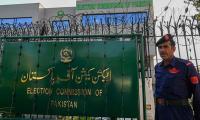The Second Lahore Literary Festival in New York was held earlier this month at the Asia Society. It was yet another well-attended session inaugurated by Permanent Representative of Pakistan to the UN, Ambassador Maleeha Lodhi.
To maintain the level of interest for the local audience, this year’s programme had panel deliberations on fake news and the rise of populism – issues that are now gaining currency in the US and other Western countries. Two sessions that specifically looped in Lahore were titled the ‘Sounds of Data Darbar’ and ‘Lahore of Kings and Commoners’. The programme included sessions on arts, music and a Qawwali performance.
‘Sounds of Data Darbar’ was a conversation between Raza Rumi and famous singer Tahira Syed – who enjoy a strong affiliation with Lahore. While both of them belong to different generations, they have seen times when change was not rapid and there were limited choices in music and entertainment. The session brought to the fore the strong impact that Lahore’s patron saint Data Sahib enjoys in the city’s cultural life and demonstrated how Qawwali recitals follow a hierarchy of seniority among performers.
‘Lahore of Kings and Commoners’ involved a conversation between Fakir Aijazuddin and Navina Haider, the curator at the Metropolitan Museum of Arts, New York. It revolved around Emperor Jehangir’s impressive legacy in Lahore’s art and architecture. Haider shared that the MET is planning an exhibition on Lahore and Jehangir that promises to be a useful attempt to document the city’s link with one of the greatest Mughal emperors and bring Pakistan’s Mughal legacy to New York. The session revealed that the long-extinct Dodo bird had been in Jehangir’s Aviary in Lahore and one of the Mughal-era manuscript carries a rare illustration of the Dodo bird.
At another session, titled ‘Imagination as Imagery’, Shahzia Sikander and her collaborators, Du Yun and Ali Sethi, showcased for Shahzia’s animation, “Disruption as Rapture”, which portrayed a seventeenth century romantic poem Gulshan-e-Ishq. The animation was commissioned by the Philadelphia Museum for its South Asia section. The ten-minute long animation reflects Shahzia’s creative skills. The session was moderated by Rachel Cooper of the Asia Society and helped audiences appreciate contemporary collaborations among different forms of art and across regions.
‘Conspiracies are a pastime: Satire and Escapism in Fiction and Beyond’ was a session moderated by Dwight Garner of the New York Times with prolific English language writers, Mohammad Hanif and the UK-based Nadeem Aslam. They discussed how conspiracies are created, travel and almost become a truth. The panelists gave the example of the story that Neil Armstrong had converted to Islam. Both writers agreed that fiction writers are required to be conspiracist of sorts because of the quality required to weave stories. For the readers of both authors, the difference between the two was stark. Hanif appeared relaxed and took the session lightly while Aslam was serious and methodical to the extent he was taking notes and approaching every question like a well-prepared school boy.
Other sessions during the day included Bernard Haykel, Siddhartha Mukherjee, Dr Azra Raza and Amb Robin Raphael. While the different sessions of the Second LLF were interesting, the programme, as a whole, needed more connection with Lahore and Literature.
The LLF is an appreciable venture and taking it overseas is contributing to country’s soft image. In addition, the LLF has been able to build an audience in London and New York. It is hoped that the organisers will curate events that project the vast diversity of country’s cultural milieu. Discussions on contemporary works in Urdu and art being produced in Pakistan should also be more comprehensively projected.
There is also a need to explore the literary prowess of Punjabi, Sindhi, Balochi and Pashto writers and bring it to a foreign audience. There are fewer translations of the works of Pakistani writers available to international readers. If efforts are made to encourage more translations, they will expose the international audience and the diaspora to the true depth of literature being produced in the country. As the LLF moves forward, there will be many opportunities to present these facets to the world.
Email: smt2104@columbia.edu
As usual, any such deal, aiming to resuscitate ailing economy, brings to fore urge and resolve to halt further...
A representational showing sticky notes on a board. — Unsplash/FileThere are some common themes from the lives...
Whether the Daanish Schools effort has been able to live up to its principles or not may be debatable
According to the federal government, last year 653,100 people experienced homelessness on a single night in America
Another advantage for Pakistan is the enhanced teledensity and internet penetration
Both media spheres need to dovetail in amplifying the urgency of addressing climate change at the local, national, and...







